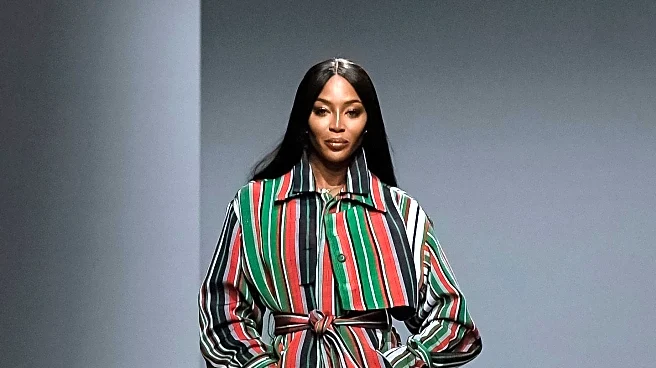What is the story about?
What's Happening?
Condé Nast has publicly announced a ban on the use of animal fur in its editorial and advertising content across its publications, including Vogue, GQ, and Vanity Fair. This decision comes after sustained pressure from The Coalition to Abolish the Fur Trade, which conducted over 100 protests targeting Condé Nast executives and their associates. The company had previously restricted the use of new animal fur but had not made a public statement until now. PJ Smith, director of fashion policy at Humane World for Animals, noted that while fur was rarely seen in Condé Nast's pages, the company was hesitant to issue a public declaration. The recent activist campaigns have prompted Condé Nast to update its sustainability website with a statement on the fur ban, allowing exceptions for subsistence and indigenous practices.
Why It's Important?
The public announcement by Condé Nast marks a significant shift in the fashion industry's approach to animal fur, aligning with other luxury brands that have implemented fur bans. This move is crucial as Condé Nast publications, particularly Vogue, have historically influenced fashion trends. By declaring fur 'out of fashion,' Condé Nast contributes to changing perceptions of what is considered humane and acceptable in modern fashion. The decision may impact designers and brands that still use fur, pushing them towards alternative materials. It also reflects growing consumer demand for ethical and sustainable fashion choices, potentially influencing industry standards and practices.
What's Next?
Condé Nast's decision may lead to increased scrutiny of other fashion companies that have yet to publicly ban fur. As major publications set new standards, other brands might follow suit to align with evolving consumer expectations. The fashion industry could see a rise in the use of synthetic alternatives and innovative materials as designers seek to meet ethical standards. Activist groups may continue to target companies that have not adopted similar policies, potentially leading to further industry-wide changes. The impact on indigenous practices and subsistence use of fur will likely be monitored to ensure compliance with the new guidelines.
Beyond the Headlines
The fur ban by Condé Nast highlights broader ethical considerations within the fashion industry, emphasizing the need for sustainable practices. It raises questions about the balance between cultural traditions and modern ethical standards, particularly concerning indigenous practices. The move may also spark discussions on the role of activism in driving corporate policy changes and the power of public pressure in shaping industry norms. As fashion evolves, the focus on humane treatment of animals and environmental sustainability could lead to long-term shifts in production methods and consumer behavior.
AI Generated Content
Do you find this article useful?













